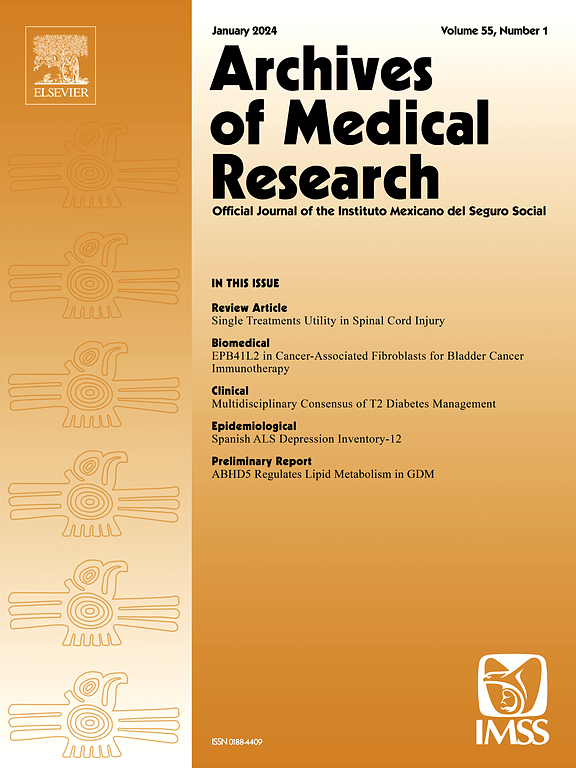Radioprotective effects of coenzyme Q10 on X-ray radiation-induced intestinal damage via oxidative stress and apoptosis
IF 4.7
3区 医学
Q1 MEDICINE, RESEARCH & EXPERIMENTAL
引用次数: 0
Abstract
Aim
The World Health Organization reported that cancer was the cause of death for 9.7 million people in 2022, and the numbers continue to rise every day. The present study examines the potential radioprotective effects of ubiquinone against x-ray radiation-induced intestinal damage and offers insight into new near-future methods for the treatment of radiation-induced tissue toxicity.
Materials and Methods
Thirty-two male Sprague-Dawley rats were randomly divided into four groups. Group I (control) received no treatment during the experiment; Group II (IR [a single dose of 2 Gy pelvic/abdominal ionizing radiation]) received radiation only; Group III (a low dose of CoQ10 [30 mg/kg CoQ10 by oral gavage for 7 d] + IR) and Group IV (a high dose of CoQ10 [150 mg/kg CoQ10 by oral gavage for 7 d] + IR). The rats were sacrificed 24 h after x-ray radiation, and tissues were collected from the small intestine and subjected to histochemical analysis.
Results
Diffuse villous fusion, enterocyte loss, hemorrhagic areas, inflammation, and fibrosis were observed in the IR group, as well as an increase in apoptotic enterocytes. In contrast, a decrease was observed in the IR+LD-CoQ10 and IR+HD-CoQ10 groups, along with a decrease, especially in villous fusion and enterocyte loss, hemorrhagic areas, inflammation, and fibrosis.
Conclusion
CoQ10 was found to reduce duodenal damage, oxidative stress, and apoptosis induced by x-ray radiation exposure and had a radioprotective effect.
辅酶Q10对x射线引起的肠道氧化应激和细胞凋亡损伤的辐射保护作用。
目的:世界卫生组织报告称,2022年,癌症是导致970万人死亡的原因,而且这一数字每天都在继续上升。本研究探讨了泛醌对x射线引起的肠道损伤的潜在辐射防护作用,并为近期治疗辐射引起的组织毒性提供了新的方法。材料与方法:32只雄性Sprague-Dawley大鼠随机分为4组。第一组(对照组)在实验期间不进行任何治疗;II组(IR[单剂量2 Gy骨盆/腹部电离辐射])仅接受辐射;III组(低剂量CoQ10 [30 mg/kg CoQ10灌胃7 d] + IR)和IV组(高剂量CoQ10 [150 mg/kg CoQ10灌胃7 d] + IR)。x线照射后24 h处死大鼠,取小肠组织进行组织化学分析。结果:IR组可见弥漫性绒毛融合、肠细胞丢失、出血区、炎症、纤维化,肠细胞凋亡增加。相反,在IR+LD-CoQ10和IR+HD-CoQ10组中观察到减少,伴随着减少,特别是绒毛融合和肠细胞丢失,出血区域,炎症和纤维化。结论:辅酶q10可减轻x射线照射引起的十二指肠损伤、氧化应激和细胞凋亡,具有放射防护作用。
本文章由计算机程序翻译,如有差异,请以英文原文为准。
求助全文
约1分钟内获得全文
求助全文
来源期刊

Archives of Medical Research
医学-医学:研究与实验
CiteScore
12.50
自引率
0.00%
发文量
84
审稿时长
28 days
期刊介绍:
Archives of Medical Research serves as a platform for publishing original peer-reviewed medical research, aiming to bridge gaps created by medical specialization. The journal covers three main categories - biomedical, clinical, and epidemiological contributions, along with review articles and preliminary communications. With an international scope, it presents the study of diseases from diverse perspectives, offering the medical community original investigations ranging from molecular biology to clinical epidemiology in a single publication.
 求助内容:
求助内容: 应助结果提醒方式:
应助结果提醒方式:


